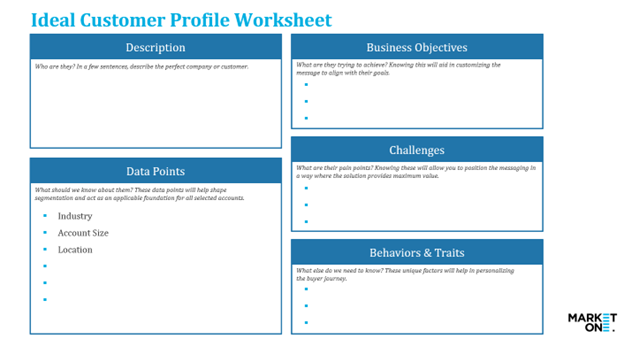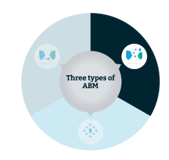ABM is all about maximizing return by focusing energy and resources on the most beneficial accounts. To ensure success, an ABM strategy hinges on meticulous account selection. Otherwise, valuable time and budget could be wasted pursuing irrelevant opportunities. Read on for the fundamental considerations to keep in mind when building your target account list.
Data and Understanding
You’ll need to understand your overall client base to select similar accounts to target. Think about what information you have on your market:
1. Pull together data from your Martech stack (CRM, MAP, CDP for example) to review. Not everyone will have the same tech stack, but it’s important to use what you do have.
2. Evaluate your current clients, your Unique Value Proposition, and how you best compete in the market.
3. What data points do you have available? For example:
- Account size
- Potential account value
- Location
- Industry
- Intent
- Engagement
4. You’ll also want to consider what you know about your existing customers:
- Who are our customers?
- Are there specific behaviors that correlate with higher engagement?
- How well do these accounts align with our goals and business strategy?
- Are they in our core industry with high growth potential?
ABM is a highly targeted approach that will take dedicated resources. It also takes a level of personalization that puts the account at the forefront of the strategy. Who the accounts are will affect messaging, content, channel selection, budget, and more. If the account selection were to change, all other aspects of the strategy would need to be addressed, draining both resources and time. Because of this, it is best practice to be well informed during account selection.
Sales Involvement
Never forget that Sales needs to have both buy-in and heavy involvement in an ABM program. They have deep insights into account behavior, pain points, and what message is winning deals. Sales also best understands the relationship between the company and the account, and which accounts are their priority. This information will be imperative to informing your next set of target accounts. However, it is important to note that Sales does not dictate the list of accounts that Marketing targets. Likewise, Marketing does not dictate to Sales who they should focus on. It is a team effort. Bring together data and insights from both teams and utilize them to develop an Ideal Customer Profile (ICP).
Account Profiling (ICP)
Once there is a good understanding of previous wins and current customers, it will be easier to identify what an ICP would look like. This ICP should be a single page document that clearly represents an account that is both high-value and has a sizable need for your product or service. It will cover the most important aspects of the account and act as a base, or source of truth, that can be referred to when making campaign decisions and aligning departments. Not sure where to start? Use the below worksheet to help map out your ICP!

Building your Account List
The final step is to compare your ICP to potential accounts and understand the volume of how many accounts fit. Use that number to inform your ABM strategy, for example:
|
 |
Be sure to work together with Sales on the final list, and remember, a wish list is not the same as an ideal match. This profile is going to inform the rest of the program (including content, messaging, channels, and sales enablement handoffs), so an account that does not fit the profile, even if it’s a big fish, could derail efforts.
For more useful tips on setting up and running successful ABM campaigns, download our ABM best practice guide, and if you’re curious about other aspects of preparing for ABM take our readiness assessment. It will help you gauge your program readiness and provide more useful tools.


